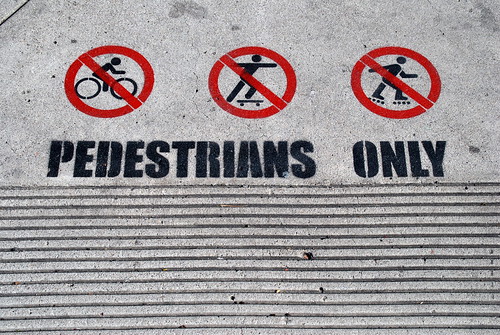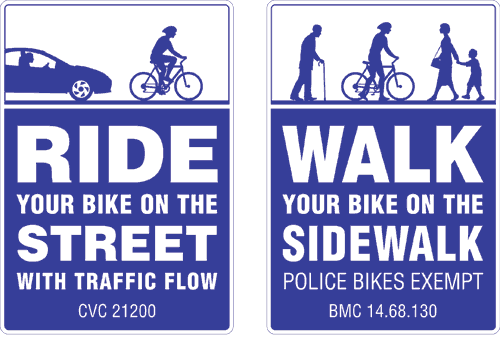BICYCLE SAFETY RECOMMENDATIONS TO HON. REP.  |
| rider and Rep. Hon War on arrival on a stretcher to hospital. |
 |
| Rep. Hon rider and War to be discharged from the hospital today. |
On 2 March, the Hon Representative José Luis Guerra was hit by a car while riding her bicycle. The next day, the Honorable Representative Antonio Silva asked in a press interview that experts will submit recommendations to improve the safety of the rider in PR. The PRBC hoped that Mr. Rivera will improve soon, and will soon be back to riding his bike. The PRBC also thanked Mr Smith for his interest and initiative.
The PRBC here makes some recommendations to Mr. Silva. The Recommendations are divided into three categories: education, infrastructure, legislation. It is important to note that each category depends on the other. We must implement the measures in each category so that all the measures work as it should.
is also important to note that many studies have shown that the most important factor to increase the safety of cyclists on the road is simply that there are more cyclists on the road . While there are more cyclists on the road (and not on the sidewalk), plus are visible, get more respect and more motorists are accustomed to cyclists. Then, as has been shown that a greater number of cyclists on the road is as effective in reducing accidents of cyclists, many of the recommendations made by the PRBC Mr. Silva are designed with the intention of Logar this' mass criticism 'of cyclists needed to increase rider safety.
Finally, we note also that the problem of safety of the rider in PR will not be solved merely by passing more legislation. This is a complex problem and you need different tools and approaches. also needed to apply the laws that already exist and others that may be adopted. Without implementing legislation is mere illusion. In PR we have laws that can protect the rider. What we need now is that the law will apply these laws.
Here are the recommendations. We do not have space here to go into much detail about them. We hope Mr. Silva invited us to go into detail with him, and his team:
EDUCATION
-
Educating on Law 22, Chapter XI all relevant government agencies, especially the police and the judicial branch . Often government agencies are unaware of this law, and therefore not enforced.
-
Include at least six Questions on Law 22, Chapter XI in the theory test for drivers license. This makes the automobile driver learns to be careful with the rider from the beginning to drive.
-
Include duties / responsibilities of the rider and driver in the version written Driver's Manual. version written is read by the vast majority of people, not the digital version. This makes the automobile driver learns to be careful with the cyclist from the beginning to drive.
-
include a "test rider" in the practical exam for driver's license. For example, you might have a person riding a bicycle as part of the exam. The driver / examindo then the examiner must show which gives the rider three feet required by law when the driver / examined by the hand passes the cyclist in your car. Another test could be that when the examinee makes parallel parking test, a cyclist passes by the side of the car on the bike. The driver / examiner then must show the examiner that he hoped that the passing cyclist before opening the car door to get off. After exiting the car, the driver / refitted examined in the car, and continues with the examination.
-
A Nadir a special section on the bike to the website of the Commission for Traffic Safety (CST). Currently, the TSA website contains very little information to the rider. As a benchmark, compare with the NHTSA website (federal agency that funds the TSA): http://www.nhtsa.gov/Bicycles
-
Team-building and / or bike clubs / cycling in the public education system. The more young people interested early in the ride, the more respect the cyclist, biking and more as adults. Parents of students also have more consideration when they are in your car and see cyclists on the road.
-
Create a league of biking / ciclcismo the police. This makes uniformed members more aware of cyclists, and that protect it.
-
Expand Police biker unit. This makes uniformed members more aware of cyclists, and that protect it.
-
educational Campaigning in the media to inform the public (and cyclists) than cyclists should not ride on sidewalks . The rider's place is in the street. Sidewalks are not safe for cyclists, and cyclists on sidewalks have also causes problems with the pedestrian. Many automovilstas yell at cyclists from getting to the sidewalk, they do not know that the law prohibits the rider to roll down the sidewalk. This type of campaign is responsible to the CST.
-
educational campaigns in the media so that motorists will give cyclists 3 feet from the whizzing by as required by law. This type of campaign is responsible to the CST. aggressively fining motorists not to give the space required by law to cyclists.
-
Create a course / curriculum education for both children and adults, on how to ride a bike properly and safely. This course could be paid with funds from the NHTSA and / or the FHWA. These courses are especially effective at the elementary school level, when most people are learning to ride a bike. These courses also enable people to ride a bike better, and have more confidence in themselves when riding biccleta, and not be afraid the street. The LAB has an education program for cyclists is excellent, and could be modified for use in PR.
INFRASTRUCTURE
-
Create bike lanes in urban areas, and other densely populated areas, preferably physical separation of automobile traffic. There are several ways and models to do this. There are extensive federal funding to do this.
-
massively Label labels' share Road ' . There are extensive federal funding to do this.
-
Install bike racks (bike racks) in important public places (eg places, government offices, spas, forests, parks, libraries, police stations, hospitals, courts, municipalities, etc.).. Besides being a necessity for cyclists, and is doing much needed, is also something that motivates people to ride more bikes, and everybody sends an important signal that the bicycle imoprtante has a place in our island as a vehicle, and as a means of transport.
-
Create safe spaces and readily accessible public where different types of cyclists can train and practice their sport (eg velodrome, tours, mountain biking routes , BMX parks, etc).
-
Keeping roads in good condition and well lit (To avoid creating light pollution). The road conditions directly affects the safety of all who use it. If the roads are full of holes, etc. can not be secure.
LEGISLATION
-
Create a law of strict liability (strict liability) for motorists, as there is in other countries. Such a law would make any automovilsta is automatically guilty in a collision with a cicilsta, unless it is proved that the rider was negligent (eg not wearing night lights), or that the rider did not obey traffic laws (eg went against traffic). With this type of law, motorists have reason to be extremely careful with cyclists on the road.
-
Deduct points in the driver's license for drivers who assault cyclists on the road. Assaulting cyclists on the road must have serious consequences for motorists, including the possibility of losing condcutor license.
-
exempt from SUT and other taxes on the purchase of helmets and lights for the safety of the rider. This is a measure that costs relatively little to the treasury, but has a huge positive returns for our society. You should make it easy to ciclsita get what you need for your own protection on the bike.
-
exempt from SUT and other taxes on the sale of bicycles with a retail price of $ 600 . $ 600 is the average price of a new bike in the U.S.. UU. The intention of this is that more people buy bikes, and therefore more people mountain bike, and having more people on bicycles on the roads, which creates more security for the ciclsita on the road.
-
Create an Office of the Coordinator of Cycling (Bicycle Coordinator) statewide . This office should have its own budget and its own staff. The Coordinator should have, and biking on the road every day. You must also have extensive knowledge about bikes, and how to use sports, recreational, and transportation. The Coordinator will serve as enalce among the cycling community and government, and advocate for the ciclsita. The Coordinator would also seek federal funds for infrastructure projects and education for the rider. This type of Office already exists in many large U.S. cities. States, where he has been very successful.
-
Prohibit the use of cell phones, computers, DVD players, and other similar devices car. aggressively fining violators, or suspend the driver's license. Many studies show that distracted drivers frequently cause accidents. These drivers are especially dangerous for cyclists.
-
programs Implement Safe Routes to School that have been implemented so successfully at the federal level. education on the bike, and Bicycle Safety should begin at an early age. Children who learn early on the bike are more likely to be careful with cyclists motorists if one day these kids drive a car. Our children should be able to go to school by bicycle, thus avoiding contaminating our environment, reducing plugs, and improving their physical health. Obesity in children nuestroso reached an epidemic level, and cycling can help combat this problem. There is ample federal funding for programs of Safe Routes to School.
-
Create Official Bike Week. This week held special educational activities to encourage people to ride bikes, and educate them about bicycle safety. It would also help educate motorists about cyclists. This week will include a Labor Day to go to the bike, during which the governor and the mayors of all bike to work would set an example to the public.
-
Require the CST to rida a public report annually to the legislature detailing the initiatives have been implemented to improve the safety of cyclists on the road. So far, there is little that the TSA, under different administrations, has done for the rider. The CST is accountable to the people, and cyclists on what you do to protect the rider.
-
law to create a Plan Bicycle Master (Bicycle Master Plan) for PR, and major municipalities in several areas of the island. The MBP is the core instrument that should guide and starting point for every rider's efforts, especially in regard to infrastructure. Working without a MBP is like sailing the ocean without a map (or without GPS).
-
Reduce speed limits in urban and suburban areas. Fine violators aggressively, or driver's license suspended. The exes speed on the road is one of the worst enemies of the rider.











